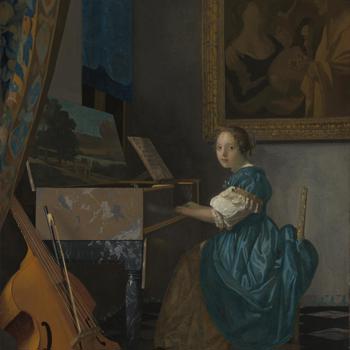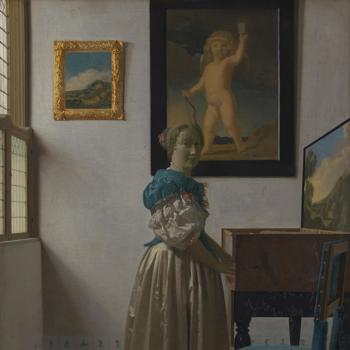Johannes Vermeer is one of the great Dutch masters, though only about 35 paintings by him are known. Born in Delft in 1632, he may have been a pupil of local history painter Leonaert Bramer.
Work and influence
Vermeer's earliest works of the 1650s include religious and mythological subjects as well as genre scenes. They are influenced by Caravaggio's followers in Utrecht, such as Hendrik ter Brugghen. Vermeer may have gained an interest in optical phenomena and the effects of the Camera Obscura from Carel Fabritius, who was active in Delft between 1650 and 1654.
Life and legacy
Vermeer was a Catholic and married in 1653, the year he became a master in the Delft painters' guild. He produced relatively few paintings and may have worked on each one over an extended period of time. Vermeer’s work inspired even international collectors to visit his studio. Nonetheless, by 1672 he was in financial trouble; he died insolvent in 1675, leaving his wife and many children destitute.
Style and symbolism
His mature domestic genre pieces have a characteristic pearly light. The eye is drawn into the picture by the careful placing of objects and a clearly defined architectural space. Figures pursue tranquil occupations, and the symbolic meaning of the scene is sometimes revealed through a painting within the painting.


